Wartsila Sulzer RTA96-C / Engine | |
|
|
The cylinder bore is just under 38" and the stroke is just over 98". Each cylinder displaces 111,143 cubic inches (1820 liters) and produces 7780 horsepower. Total displacement comes out to 1,556,002 cubic inches (25,480 liters) for the fourteen cylinder version.
Some facts on the 14 cylinder version:
| Total engine weight | | 2300 tons (The crankshaft alone weighs 300 tons.) |
Length | | 89 feet |
Height | | 44 feet |
Maximum power | | 108,920 hp at 102 rpm |
Maximum torque | | 5,608,312 lb/ft at 102rpm |
| |

Video »
|
Fuel consumption at maximum power is 0.278 lbs per hp per hour (Brake Specific Fuel Consumption). Fuel consumption at maximum economy is 0.260 lbs/hp/hour. At maximum economy the engine exceeds 50% thermal efficiency. That is, more than 50% of the energy in the fuel in converted to motion.
For comparison, most automotive and small aircraft engines have BSFC figures in the 0.40-0.60 lbs/hp/hr range and 25-30% thermal efficiency range.
Even at its most efficient power setting, the big 14 consumes 1,660 gallons of heavy fuel oil per hour.
A cross section of the RTA96C
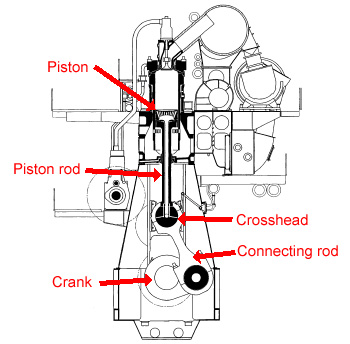
| |
The internals of this engine are a bit different than most automotive engines.
The top of the connecting rod is not attached directly to the piston. The top of the connecting rod attaches to a "crosshead" which rides in guide channels. A long piston rod then connects the crosshead to the piston.
I assume this is done so the the sideways forces produced by the connecting rod are absorbed by the crosshead and not by the piston. Those sideways forces are what makes the cylinders in an auto engine get oval-shaped over time.
|
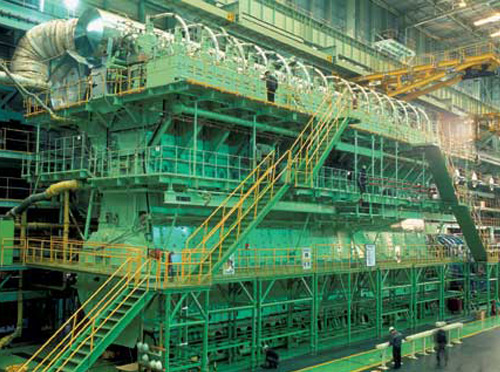 |
|
Engine: Wartsila Sulzer RTA96-C |
 |
|
The top of the connecting rod is not attached directly to the piston. The top of the connecting rod attaches to a "crosshead" which rides in guide channels. A long piston rod then connects the crosshead to the piston.
I assume this is done so the the sideways forces produced by the connecting rod are absorbed by the crosshead and not by the piston. Those sideways forces are what makes the cylinders in an auto engine get oval-shaped over time. |
| |
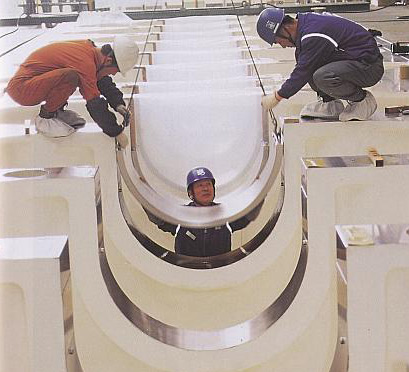 |
|
Installing the "thin-shell" bearings. Crank & rod journals are 38" in diameter and 16" wide |
| |
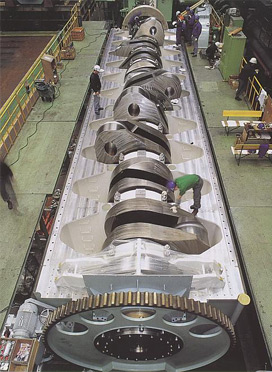 |
|
The crank sitting in the block (also known as a "gondola-style" bedplate). This is a 10 cylinder version.
Note the steps by each crank throw that lead down into the crankcase |
| |
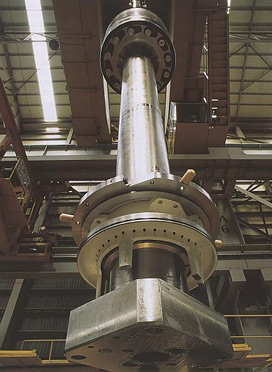 |
|
A piston & piston rod assembly. The piston is at the top. The large square plate at the bottom is where the whole assembly attaches to the crosshead |
| |
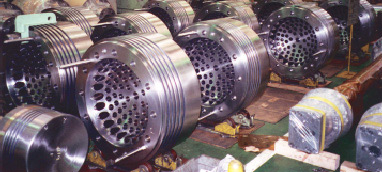
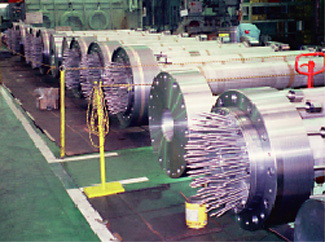 |
|
Some pistons and piston rods
The "spikes" on the piston rods are hollow tubes that go into the holes you can see on the bottom of the pistons (left picture) and inject oil into the inside of the piston which keeps the top of the piston from overheating. Some high-performance auto engines have a similar feature where an oil squirter nozzle squirts oil onto the bottom of the piston.
|
| |
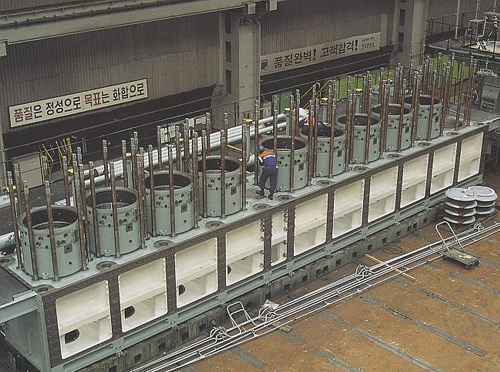 |
|
The cylinder deck (10 cylinder version). Cylinder liners are die-cast ductile cast iron. Look at the size of those head studs |
| |
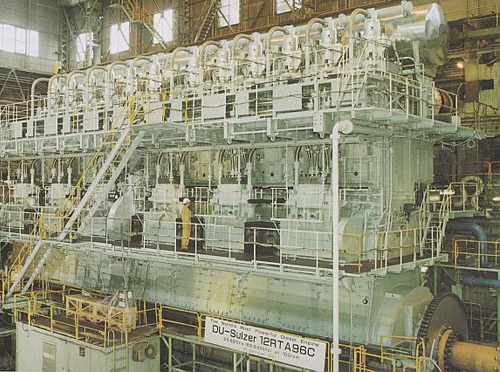 |
|
The first completed 12 cylinder engine |
| |











